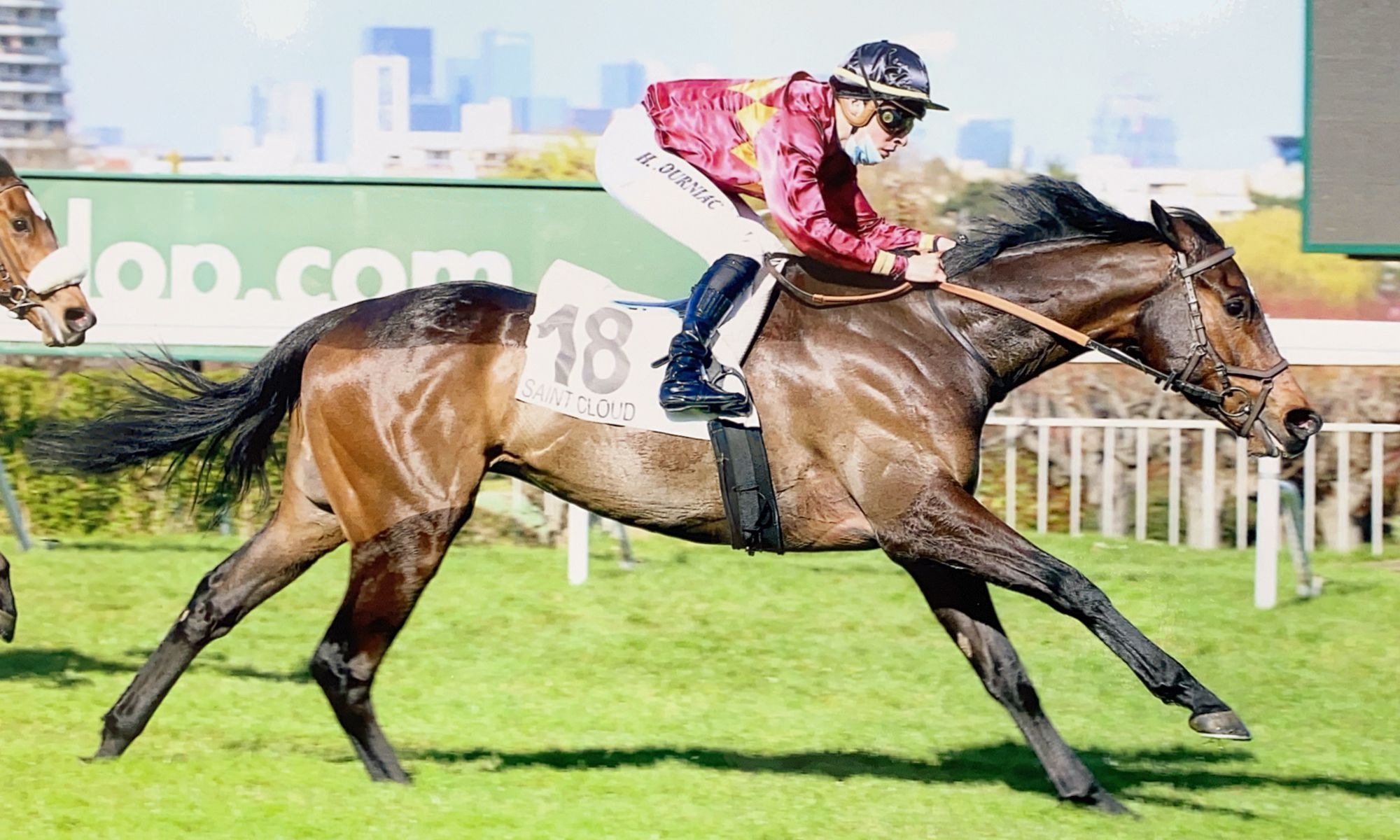King Driver goes back to racing school tomorrow, trying his first handicap in Dieppe. If he progresses as he should from Vittel, he should be in the money. Two things are working against us: The draw and the ground. We are drawn far outside in hole 13, and Dieppe was a swamp on Monday for the jumps meeting. I think King will handle heavy ground, at least from the looks of the paddles he has for feet, but things should have dried up quite a bit today and I’m afraid we might just end up with a sticky mess tomorrow, neither heavy nor soft. Still, if Tristan can find a back for him, we should have a chance. That’s a challenge breaking from that post, but he’ll do his best. In any case, one thing is clear: The horse is improving, and he comes from a family of winners. If not tomorrow, soon.
We’re also adding a horse to the yard from the Newmarket sales: Grey Falcon, an unraced three-year-old Clodovil gelding. Normally I would shy from a horse that hasn’t yet raced at three, but this one is clearly backwards and just needs a bit of time. He was bought for one of my American owners and should be ready to go in the fall. He gets French owners’ premiums and is a lovely big horse with a good paper, so watch this space for his progress. At the moment, he is at Xavier Richard’s in Normandy working off some of his baby fat.
There is a half-share available on another horse that I think will be a bit of fun: Gorki Park, a two-year-old Sageburg gelding who should be ready to run soon. He is being purchased for an owner who would like a partner for the other half, so contact us if you’re interested. He is French-bred, so he is eligible for 75-percent premiums on purses won this year and 68-percent premiums on purses next year. He is not expensive and should be useful, so if you’re thinking of getting a toe in the water, this is a nice opportunity. This is the first crop of two-year-olds for Sageburg, and all of them to race have been in the money.

